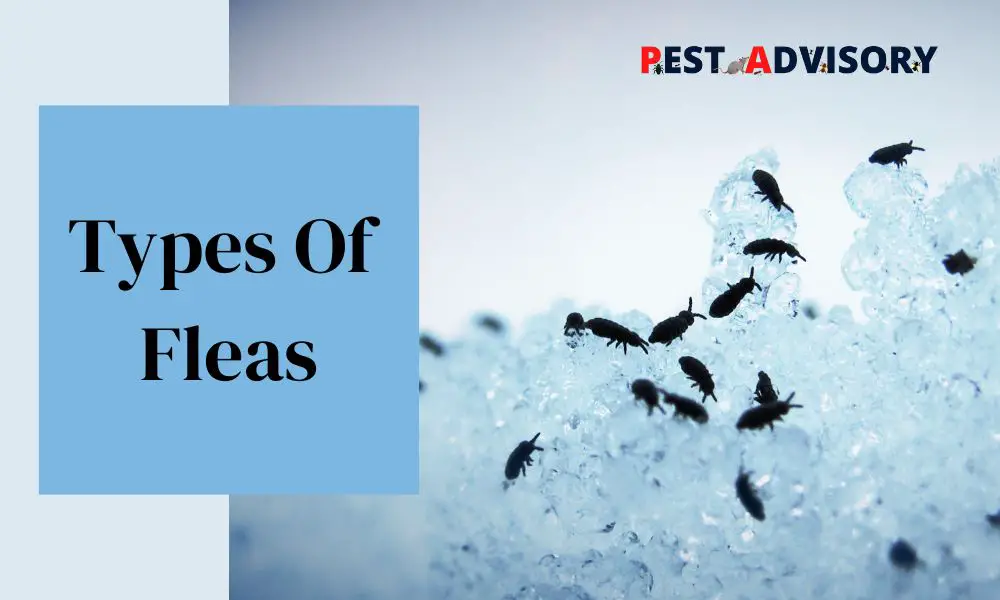You must have heard pet owners complaining about fleas. If you are a pet owner, you might have observed your pets annoyed and scratching themselves.
Fleas irritate your pets by biting and sucking their blood and also cause itchiness. You will be surprised to know about the varieties of fleas and the problems caused by them.
This article will cover all relevant information about fleas and their types and how to control their infestation in your homes.
Important Note: If you're tired of pests and want a reliable solution, then you should definitely consider seeking help from a professional pest control company. DIY solutions can be effective, but if you're dealing with a significant pest infestation, you don't want to rely solely on DIY methods. Pest control companies typically don't charge huge fees. You can fill out this form to receive free quotes from the top local pest control companies, and compare the quotes and see for yourself. Then, finally, your pest problems will be eliminated for good.
So, let’s get started!
What Are Fleas?
Fleas are insects that belong to the phylum Arthropoda and class Siphonaptera. These are tiny organisms capable of sucking blood from the body of warm-blooded animals like mammals.
The parasitic life form ensures them free food and lodging. Thus, it is favorable for them.
They feed on blood, and female fleas require it for laying their eggs. If you think that there are only two types of fleas, dog and cat fleas, then you are wrong, my friend.
There are about 2500 species of fleas. They usually make dogs and cats their hosts. Though it is rare, some of them parasitize humans too.
You might think that the maximum they can do is bite you, cause some allergic reactions, and suck your blood. But there is a lot more they can do.
Fleas have been the cause of pandemic outbreaks like the Bubonic Plague and the death of many people. They are also potential carriers of diseases like Murine typhus, Tularemia, and Tungiasis.
So, please take the necessary measures to remove them as soon as possible.
| Flea Type | Size | Appearance | Habitat | Cats, dogs, and other mammals including humans |
|---|---|---|---|---|
| Cat flea | 1-3mm | Dark brown, flattened body | Warm and humid environments, found on cats and dogs | Dogs, cats, and other mammals including humans |
| Dog flea | 1-4mm | Dark brown, flattened body | Warm and humid environments, found on dogs and other mammals | Dogs, cats, other mammals including humans |
| Human flea | 1.5-3.3mm | Reddish-brown, flattened body | Poorly sanitized areas with high human populations, found on humans and other mammals | Humans, other mammals including rodents |
| Rat flea | 1.5-3.3mm | Dark brown, flattened body | Found on rodents, particularly rats | Rodents, other mammals including humans |
| Sticktight flea | 1.5-3mm | Brown, oval-shaped body with sharp spines on the legs | Warm and humid environments, found on birds, dogs, cats, and humans | Birds, dogs, cats, other mammals including humans |
What are the Types of Fleas?
The whole biological class of fleas can be put into many different categories depending on the classification criteria.
We have classified fleas based on their most probable and favorable hosts. The major types of fleas are
Cat and Dog Flea
The cat flea and Dog flea, also known as Ctenocephalides felis and Ctenocephalides canis, are the most common types of fleas found on cats and dogs, as well as other mammals including humans.
These fleas are typically dark brown in color and have a flattened body that allows them to move easily through an animal’s fur. Cat fleas are known for their ability to reproduce quickly, with females laying up to 50 eggs per day. They can also survive for long periods of time without a host, making them difficult to control once they have infested a home or other environment.
Cat and Dog flea bites can cause itching, redness, and swelling, and can also transmit diseases to humans and animals.
A generation of these fleas requires about 2 to 4 days for the eggs, 8 to 24 days for the larvae, and 5 to 7 days for the pupal stage.

Human Flea
The human flea, also known as Pulex irritans, is a type of flea that primarily feeds on humans and other mammals. While less common than other flea species, the human flea can still be found in many parts of the world, particularly in areas with poor sanitation or high human population densities.
These fleas are typically reddish-brown in color and have a flattened body that allows them to move easily through hair and clothing.
The human flea attacks hosts including swine, dogs, coyotes, prairie dogs, ground squirrels, and burrowing owls.
Human flea bites can cause itching, redness, and swelling, and can also transmit diseases to humans and animals. Control of human fleas typically involves thorough cleaning and pest management measures.
Rat Flea
The Rat flea is of two types also known as Xenopsylla cheopis (Oriental rat flea), and Nosopsyllus fasciatus (Northern rat flea) are types of fleas that are commonly associated with rodents, particularly rats.
These fleas are usually dark brown in color and have a flattened body that enables them to move easily through the fur of their hosts.
Rat fleas are known for their ability to transmit diseases, including bubonic and pneumonic plague, to humans and animals. The transmission of these diseases occurs when the flea feeds on an infected rodent and then bites a human or other host. Rat fleas can also transmit other diseases such as typhus and murine typhus.
Temperatures of 65° to 80°F. with humidities of 70% or over are
favorable for the hatching of eggs.
The life cycle varies, being completed in as short as 6-8 weeks. Adult oriental rat fleas may live for 2-4 weeks depending on the temperature and relative humidity.

Sticktight Flea
The sticktight flea, also known as Echidnophaga gallinacea, is a type of flea that primarily feeds on birds, but can also infest other animals such as dogs, cats, and humans.
These fleas are typically found in warm and humid environments and can attach themselves to their host’s skin, often around the ears and eyes. The name “sticktight” refers to the flea’s ability to firmly attach itself to its host, making it difficult to remove.
Sticktight flea bites can cause irritation, itching, and inflammation. In addition to being a nuisance, these fleas can also transmit diseases to both birds and mammals.
How to Control Flea Infestation?
You know by now that fleas are harmful to your health, and their population can become humongous at a fast rate.
Thus, controlling their population and stopping them from growing in the first place should be your priority.
You should clean your home and bathe your pets regularly. Make sure to comb your pet’s hair to remove the dead flea bodies.
Use flea repellents like vinegar and essential oils after diluting them. You can also use crushed salt to kill fleas.

Remember to use these substances at a regular intervals of a week or two to wipe out their population.
If you have tried everything and still do not get the desired results, call pest control services to get rid of fleas from your home.
Ensure to pay a visit to the vet if your pet is acting weird due to using any of these substances. Never use any liquid flea repellents without diluting them.
Your health should be of utmost importance to you. We recommend you visit a doctor if you experience breathlessness, itching, irritation, or other problems due to flea bites.
Final Words
There are many types of fleas and you cannot classify them by just looking at them unless you are an expert.
All you need to know is that no matter how insignificant they seem to be, they cause diseases. Thus be extremely cautious and thorough while dealing with them and contact the exterminators if you cannot get rid of them yourself.
That’s it for now. We hope that you got the desired information about fleas.

